

Tons of Delicious Fruit in Los Angeles Is Going Uneaten
A story of immigrant populations, gentrification, and the free loquat bonanza.
Update: The original headline of this story was “Los Angeles Is Covered in Delicious Fruit and No One Is Eating It,” which was an exaggeration that discounted the many communities who do consume loquats. Readers also rightly pointed out that in focusing on gentrification, the story left out the voices of those communities. To address this, the author has re-reported the story and added new sections, which you will find in italics, interspersed with the original text.
Los Angeles does, contrary to what some believe, have seasons; they just aren’t the same as those in the Northeast or Midwest. There isn’t really a fall or a winter. Instead, there’s Fire Season, Rainy Three Weeks, and June Gloom, among others. But there’s another way to measure the passage of time: by fruit. We’re not talking about what’s in the farmer’s markets, but what’s growing on the streets, in parking lots, in plots of land that may or may not belong to anyone.Los Angeles, especially the hotter, drier East Side, is not home to an unusually large number of native edible plants, but it is home to an absolutely berserk amount of non-native fruit trees, planted both intentionally and accidentally. Many of these simply line neighborhood streets. Among them, especially prominent on the East Side, in now-trendy neighborhoods like Silver Lake, Echo Park, and Atwater Village, is the loquat.
We made a mistake here with the phrase “East Side.” Historically, “Eastside,” one word, is used to refer to several neighborhoods within Los Angeles, on the east side of the Los Angeles River, including Boyle Heights, El Sereno, and East Los Angeles. Owing to racist policies, the Eastside was exclusively for non-whites, which included Latinos, Jews, Black Americans, and others that those policies meant to sequester in less desirable parts of the city. In more recent years, the term Eastside, or East Side, has come to be used by some—often white—Angelenos to refer to neighborhoods not technically part of the Eastside, but further east than white people historically lived, in neighborhoods such as Silver Lake and Echo Park. But those neighborhoods are on the west side of the river, and the casual use of “Eastside” can feel like an erasure of segregationist policies that created that area in the first place.
The loquat—an extremely juicy, incredibly prolific, mighty delicious sweet-sour fruit, bright yellow in color, somewhere between a plum and a mango in flavor—is so common that you can hardly walk more than three or four houses in these neighborhoods without passing one. And yet it isn’t celebrated, prized, or, for the most part, eaten at all. You can tell this because if they were valued, then all those trees wouldn’t be absolutely heavy with fruit. “Nobody eats them,” says Alissa Walker, a Los Angeles–based journalist and loquat enthusiast, of the loquat trees in her neighborhood. “They just hang on the trees, and I’m like, ‘Is anyone going to eat these?’”
Loquats are not, despite their name’s similarity to kumquat, in the citrus family. They’re actually in the rose family, which also gives us apples, pears, and stone fruits. The tree can be anywhere in size from a large shrub to 30 feet high, and is extremely attractive in a subtropical way, with dark, glossy green leaves. It’s native to southern China, and also has a very long history in Japan. When the Portuguese became the first Europeans to land in southern Japan, in the mid-1500s, they established commercial trade between the two empires, and brought the loquat back to Europe. From there it spread to essentially anywhere warm: the entire Mediterranean basin, the Middle East, parts of West Asia. The Spanish found the loquat grew especially well for them—the country is still a major producer—and brought it to their warm colonies in the New World. Throughout Latin America, the loquat was planted, and grew, and produced lots of fruit.
Loquats are very easy to grow. They’re evergreen, and don’t require much water for a fruit tree, which makes them ideal for places with a lot of sun and not a lot of water. (Los Angeles is a perfect example.) They can tolerate just about any kind of soil as long as it’s not too salty, can handle high elevations with no trouble, and can even be planted from seed (though the fruit from those loquat trees may not be good). Grafting—basically inserting a loquat branch into a cut on an existing tree—is the preferred method, and you can graft loquats onto the trees that produce pears, apples, quince, and most of the other rose family fruits.

They produce an almost overwhelming amount of fruit with basically no care or effort. Leave them alone, in shitty soil and with hardly any water, and each spring, you’ll get more fruit than you can possibly eat. Huge bunches of golden, plum-sized fruits, easy to pick (no knife or tool needed), with edible skin, perfect for snacking. And in Los Angeles, it’s common to see trees with branches buckling and bowing with the weight of these bunches. Nobody picks it. Whatever the birds, squirrels, and racoons don’t get to simply falls off and rots on the ground.
Walt Disney changed the path of the East Side of Los Angeles in 1925, when he placed his first studio in Silver Lake. By the late 1940s, the studio moved to the north, to Burbank, but Silver Lake had become established as a home for actors, especially LGBTQ actors. By the 1970s, the neighborhood, close to downtown Los Angeles, grew to embrace a mix of artists and recent immigrants, who lived there for its affordability and proximity to factory work downtown. Those immigrants were primarily from Latin America, and especially Central America: Honduras, Guatemala, El Salvador, Nicaragua.
When the Spanish brought the loquat to their Latin American colonies, the fruit became a major part of Central American culture. Central America is fruit heaven; in addition to native papaya, passionfruit, and guava, the Spanish (and later the Americans) used the rich tropical environment to grow a massive array of flavors and colors. The loquat, which is called níspero in Spanish, is common in these countries. It’s typically eaten fresh, the large seeds spat out, and sometimes made into jam. (It has an extremely high pectin content, which allows jams to set easily.) San Juan del Obispo, in Guatemala, has a loquat festival each year.
Those Central Americans, when they came to Los Angeles, planted the loquat in their yards and gardens. Though this part of Los Angeles is much less humid, more desert-like, than Central America, the loquat thrives there, unattended. (Other tropical fruit trees in the area grow just fine, but may need a large amount of added water and sometimes for the soil to be amended.) The loquat trees sprang up all over the East Side, providing a taste of home (and free food) to those new to the city and their descendants.
Silver Lake, though, offers just one of the loquat’s many stories. Let’s travel further east, across the Los Angeles River, to Boyle Heights. Boyle Heights was originally, in the late 1800s, a spacious neighborhood of some agriculture and some upper-class residents living in beautiful Victorian houses, some of which still stand. Thanks to those housing policies we mentioned, though, in addition to its close proximity to Downtown Los Angeles (including a streetcar line where the modern-day Gold Line is), Boyle Heights quickly became a landing spot for immigrants: It was both convenient to commercial and industrial jobs in Downtown, and, well, they were actually allowed to live there. “Boyle Heights very quickly became one of the few neighborhoods in Los Angeles at the time that was accessible for non-Anglo-Saxon people,” says Emily Anderson, a curator, born in Japan, who has worked with the Japanese American National Museum on exhibits, including one on Boyle Heights.
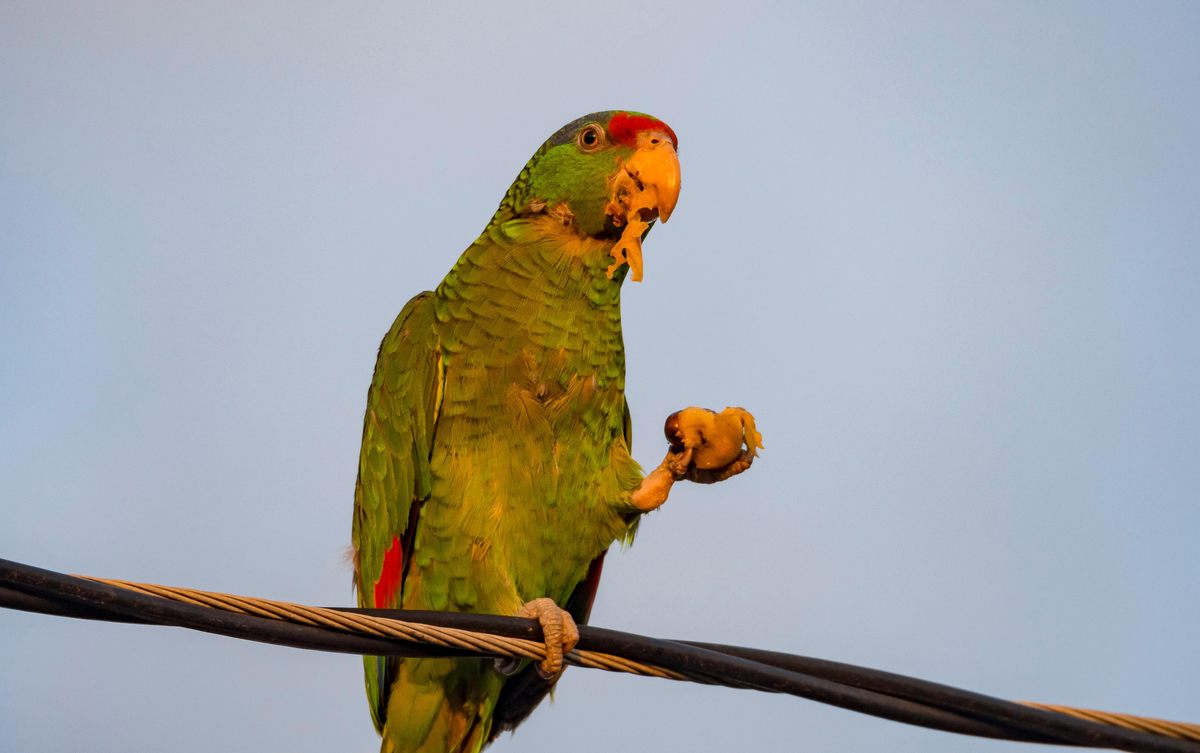
Starting in the 1880s and through the 1910s, Boyle Heights attracted immigrants from all over, but two groups became the most prominent: Japanese and Ashkenazi Jewish. The Japanese community, says Anderson, were either coming directly from Japan, from Hawaiʻi, or moving south from San Francisco following the 1906 earthquake. “People moved south for work,” says Anderson. “The driving economy was agriculture; a lot of immigrants came from agricultural families in Japan. They came in with substantial agricultural knowledge and experience.”
With the forced opening of Japan to trade by the United States from 1854 to 1859, Japan looked around the West, following a long period of isolation, and saw an industrialized world that was a threat to colonize, or effectively colonize, them. So the country began rapidly industrializing, which devalued what had been an extremely efficient and innovative agricultural industry. It was those farmers who largely made up the California (and Hawaiʻi) diaspora: “I would say 85 or 90 percent of the Japanese population was in farming, to some degree,” says Anderson. And you can imagine what Hawaiʻi and California must have looked like to a group of expert farmers from Japan: a big, permanently sunny, rapidly developing wonder. Many who came just intended to make a few bucks and then go back to Japan; some did, but many stayed. “Japanese immigrants helped make California the agricultural power that it is,” says Anderson.
Little Tokyo, located in Downtown Los Angeles, is right across the river from Boyle Heights, and while Little Tokyo became the main commercial center of the Japanese community in Los Angeles, Boyle Heights was the residential center. Some of this community worked in Little Tokyo, but many worked in agriculture, in the orange groves and farms that surrounded the city. Some of this land would eventually be developed and become part of the city.
Here’s where things get difficult, because there are no records of fruit tree planting in residential Los Angeles. “It’s hard to know, because there’s just not a lot of documentation,” says Paul Spitzzeri, a Southern California native and the director of the Homestead Museum, in the San Gabriel Valley. The state didn’t monitor it, because noncommercial agriculture wasn’t really their purview, and the media didn’t either, because the media at the time was not generally interested in documenting the ways in which non-white people lived. “The Times or the Herald or the Express were not super likely to talk about that kind of stuff, and when they did it would often be pejorative or exoticism,” says Spitzzeri. Fruit trees also are not particularly helpful themselves, because they are astoundingly long-lived and not very talkative. Loquat trees, like orange, fig, and many other fruit trees, can live well over a century. So to figure out who planted the loquat trees, we have to employ some guesswork, and then acknowledge the other possibilities.
My guess, after a lot of research and a lot of interviews, is that some loquat trees were planted as ornamentals in wealthier, hilly parts of Los Angeles. Some were planted by enthusiasts; the loquat enjoyed a boom period in the city. Some were left behind by developers of formerly agricultural land. They’d often, says Spitzzeri, leave a fruit tree or two on each property, while tearing out all the others to make room for houses. But in Boyle Heights, my guess is that they were planted by the Japanese community. The loquat has been in Japan for centuries, and the country remains one of the largest commercial producers today, though only some parts of the country, mostly in the south, have the right climate for it. Anderson didn’t have statistics to back that up, because there aren’t any, but, well: “I don’t have evidence to back this up, but my educated guess would be that that is absolutely correct,” she said.
The Japanese community had agricultural expertise and land that they could work, and were already familiar with the loquat. I couldn’t find anyone who knows for sure, but this all points in the direction of the Japanese community planting many of Boyle Heights’s long-lasting loquats.
The forced internment of Japanese-Americans from 1942 to 1945 pushed the Japanese community out of Boyle Heights, and a series of racist housing laws were already in place to keep them from owning their houses. The Jewish community, increasingly seen as, at least, almost white, were permitted to move, and many did leave Boyle Heights around this time, moving west (geographically) and up (on the American social ladder). This left Boyle Heights, a neighborhood with a history as a landing place for immigrants and with close proximity to both industrial and agricultural work, with a whole bunch of available housing. “Internment camps really kind of cut that tie, and a lot of Latinos bought homes from the Japanese in the 50s,” says James Rojas, an urban planner and Boyle Heights native who pioneered the concept of “Latino Urbanism,” which aims to show the physical and cultural effects that Latino communities have had on cities, particularly American cities.
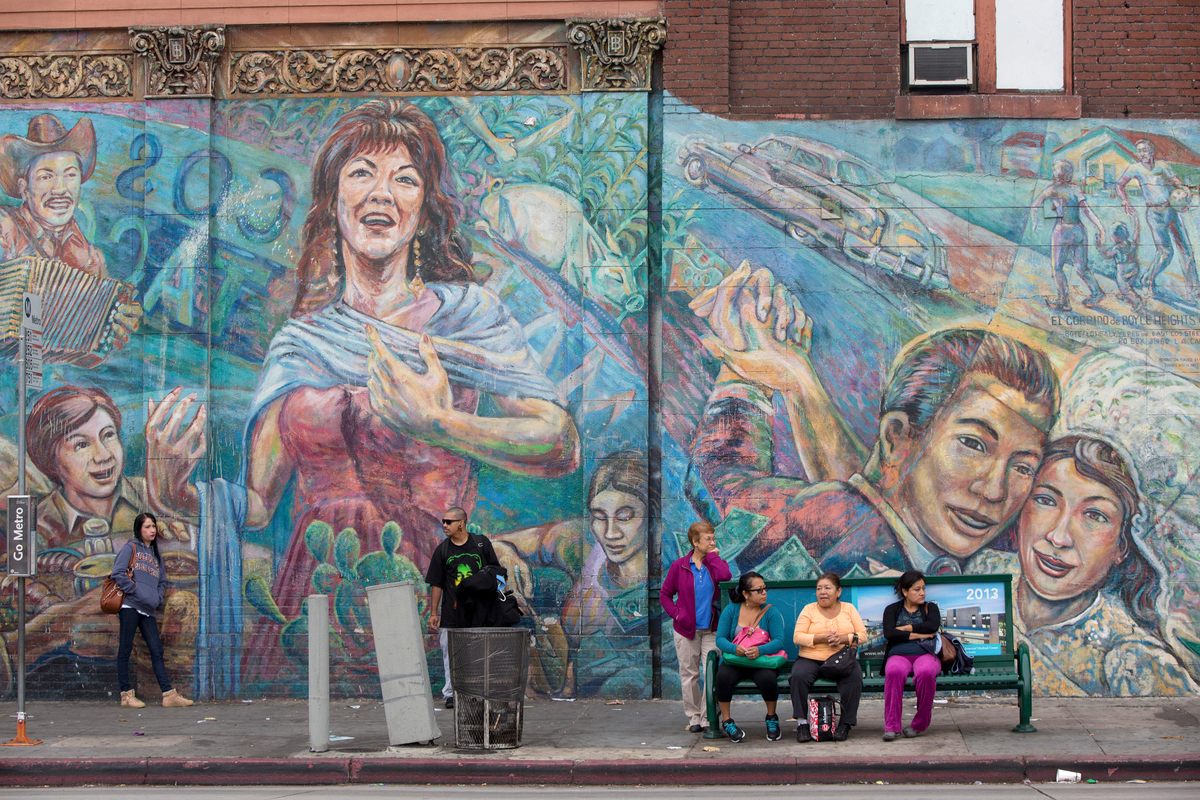
“Growing up in Boyle Heights, my grandma had that tree, and I always thought it was odd,” says Rojas of the loquat. “You didn’t see them at the market. But when I went to Japan, I saw a lot of them over there.” But the loquats stayed in Boyle Heights, owing to the way that Latino families designed their landscapes. “For Latinos, we tend to just layer things on top of each other,” says Rojas. “If there’s a pomegranate tree, we’ll just leave it there. Where I think maybe a person with more money might think, I want to have a brand new landscape that’s my aesthetic.”
Loquats are not unheard of in Mexico, but they’re not particularly common there, either, and Rojas says that it’s likely that many of the Latino families that moved into formerly Japanese Boyle Heights had no desire to tear out a productive, beautiful fruit tree just because it wasn’t something they were super familiar with. Instead they just planted other stuff—avocados, limes, lemons—next to the loquat and persimmon trees left by the Japanese. And the loquats didn’t go to waste, either. Mexico has a culture of snacking on fruit, and the loquat is absolutely perfect for that. “When I was a little kid, we always ate outside,” says Rojas. “We didn’t eat cookies or candy, we had the fruit trees.” This was echoed by the other Mexican-Americans I talked to. “We primarily just snack on them,” says Ariana Rodriguez, a civil rights lawyer and third-generation resident of City Terrace (and caretaker, she says, of the best loquat tree in the world—we could not verify this claim but would love to investigate further). “We had a loquat tree right next door, and used to be able to eat the fruit off it all the time,” says Nicole Presley, a food blogger who was born and raised in City Terrace and East Los Angeles.
Rojas’s work focuses on the ways in which Latino urban communities operate. “We have a very different idea about city planning versus the U.S. government planning policies, which are very transactional,” he says. “Especially for Latinos, neighborhoods are about cultural production. They produce everything, they produce food, they produce art. It’s not a society of consumption. In other neighborhoods, you just buy things. But in Boyle Heights and the immigrant neighborhoods, it’s about production, so the landscape becomes part of that production space.” These are also heavily rooted communities, with many, like Rodriguez, having been there for three or four generations. They know their neighbors, and there’s a real sense of community. In Los Angeles as a whole, though, that may not be true.
“The ‘pod’ thing is totally true,” says Esther Tseng, a food writer born in the Milwaukee suburbs who has spent more than half of her life in Los Angeles. “We do have more space, and you can kind of just go about your own life. We are afforded our own personal space without needing to get up in each other’s business.” That extra space, plus the modern-day reliance on the car as means of transport rather than public options (which do exist, but are far less popular than cars), plus swiftly moving gentrification and other changing population waves, mean that many describe Los Angeles as a deeply private place. “People in Los Angeles are really segregated, we’re all in our own bubbles,” says Presley.
So the Latino community may have all this wonderful tradition of sharing fruit—several people mentioned brown paper bags full of fruit from residential fruit trees being passed around the neighborhood—but that isn’t necessarily the same for everyone, especially in gentrified areas. Some people may not know what a loquat tree is, may not know it’s edible (let alone fantastically delicious), may not have the relationship with their neighbors needed to learn that, and may not come from a culture that automatically sees fruit trees as an incredible resource. “I’ve always just assumed people see value in fruit trees, that there is worth to what they provide, and that sharing builds community,” says Rodriguez. “But I’ve never thought about it in that kind of way, it’s just what you do.”
Loquats are unusually early-ripening fruits; they’re ready to eat by springtime, starting in late March, though the season lasts, unlike with citrus, for only a few weeks. They are, for a particular kind of Angeleno, the marker of the end of the rainy season and the start of spring. “I have two kids, and for them, everything is about seasonality, right? What’s the next holiday or whatever,” says Walker. “So it really has become, for them, this real springtime thing. They’re really big on picking them, they know where the trees are, we go out with our little wagon. There are so many just on our walks around the neighborhood or on the walk to school.”
This story feels common in Los Angeles. One of the city’s great, weird attributes is its status as a sort of blank canvas. It is a large city where one shouldn’t really exist, low and sprawling outwards. Instead of apartment buildings, on the East Side, in the mid-1900s, there were bungalow complexes clustered around a common outdoor space. And in most of those outdoor spaces, there were fruit trees.

All cities change as new people and new communities move in, but in the denser, older cities of the Northeast and Midwest, there’s only so much that immigrant communities can impact. Businesses change, languages change, but it’s not as if apartment buildings in New York’s Chinatown or Chicago’s Portage Park are torn down to make them more like buildings in China or Poland. In Los Angeles, though, planting fruit trees from home, wherever home was, has long been an affordable way to physically alter a neighborhood. Iranian immigrants in Glendale planted pomegranates. French and Italian immigrants planted grapevines Downtown. (There’s still, improbably, a winery there.) Filipinos in Glassell Park and Historic Filipinotown planted calamansi. There are dozens of these stories; just about everything short of arctic cloudberries will grow in Los Angeles, if you give it enough water.
Another important community in Los Angeles, even right around the area this story addresses, is the Armenian population. In the 1910s and 1920s, waves of Armenians fled the Armenian genocide, and many went to Los Angeles. Today, it has the largest Armenian population outside Armenia. Loquats, and fruit in general, are extremely important to Armenians, and fruit trees are very common. “Armenians’ homes will generally always have fruit trees,” says a British-Armenian streetwear designer, based in Los Angeles for the past decade, who asked to be identified by the pseudonym of his clothing line, Ara the Rat. He sells an extremely sick loquat-themed shirt. “Pomegranate, apricot, fig, loquat, plum, lemon, and orange trees are common to see,” he says. “In Los Angeles you can usually spot an Armenian home just by looking at the specific variety of fruit trees they have planted at the front.”
“Armenians are obsessed with eating fruit, growing fruit, turning it into jams and preserves and sharing it with people they love. The aforementioned pomegranates and apricots are always present, but so are quinces, grapevines, figs, persimmons, and more,” says Liana Aghajanian, an Armenian-born, Los Angeles–raised journalist who often writes about food and culture. “Because I grew up in L.A. and I’m from an Armenian household, loquats were just part of the scenery of everyday life,” she says. “They were all over our street, in backyards and front yards, including my uncle’s garden.”
To the Armenians who fled their homeland, the fruit trees they planted and enjoyed in Los Angeles are much more than just pretty landscaping or a living snack vending machine. “Because of the turmoil in our history related to the genocide and subsequent cycles of upheaval, our associations with fruit, soil, and land is magnified,” says Aghajanian. “These things take on a deeper meaning once they’ve been taken from you—and so we are always, in some way, attempting to recreate the ancestral lands we were forced to leave. It’s attempting to recreate the agriculture, the gardens, the environment that we were taken away from.” (Both Aghajanian and Ara the Rat noted that, while the Los Angeles loquats are delicious, the apricot scene is lacking compared with Armenia’s. “You will never find one as good as the ones that are in Armenia,” says Aghajanian. “Their taste is indescribable. I have tried to find ones to compare, and almost every single apricot hunting expedition in the United States has been a flavor failure.”)
Ara the Rat, like the Japanese-American and Latino people I interviewed, said that loquats are usually eaten raw. “They’re usually just eaten as-is. The skin is peeled off and eaten directly,” he says. (Loquat skin is perfectly edible and not especially thick, but many people do peel them.) Aghajanian agrees, saying that she hasn’t come across many recipes for using the loquats, though she does plan to make jam this year. In Mexican culture, there’s that fruit snacking tradition, and Anderson says that fruit in Japan is primarily eaten as a dessert, and usually raw. But the loquat is also an absolutely fantastic fruit for cooking or manipulating in other ways. This may be a more recent thing, as the people I talked to described eating them raw growing up, and only recently experimenting with baking. “These last couple of years, my partner has made them into a crumble, into a jam, and we’ve been kind of kicking ourselves for not making jam for the past 30 years,” says Rodriguez.
This city has almost been terraformed—the sci-fi term for the process by which humans alter the land, air, and atmosphere of another planet to make it more like Earth. Immigrant groups to Los Angeles terraformed it to make it more familiar to them, or maybe just so it could produce some free food they like.

In many of these neighborhoods today, however, loquats go unpicked. “When we started doing this project, we first catalogued about 100 fruit trees in public spaces, and none of them were ever picked,” says David Burns. The project Burns is referring to is Fallen Fruit, a legendary and long-running Los Angeles art project that creates maps of public fruit around the city—and, later, many other cities around the world. Fallen Fruit was started in Silver Lake, and Burns, a native Angeleno, is a huge loquat fan. To be fair, he says, “Some people do celebrate it, there are some who flip out for loquats, because they’re so good.” But he, like everyone else I talked to, acknowledges that there is an absolute invasion of unpicked loquats around these Los Angeles neighborhoods.
It’s not at all clear how many fruit trees there are on residential land in Los Angeles; it would be a wildly expensive survey for not much benefit besides, you know, satisfying the curiosity of weirdos like myself, and it’s not like you have to fill out a form when you plant an avocado tree. But we do have some idea of just how gigantic the fruit production is. “In L.A. County alone, we’ve collected over 1.6 million pounds of produce since inception in 2009,” says Samantha Teslik, senior manager of Food Forward’s backyard harvest program. Food Forward uses a network of volunteers to go out to people’s houses and collect their backyard fruit, which is then donated to a variety of organizations that provide food to the food-insecure, from food banks to refugee camps to senior homes. And those are mostly citrus fruits, which are very well-suited to the trickiness of donation infrastructure: They stay ripe on the tree for a long time, so you can pick lots of them at once, and they don’t go bad quickly. There are many, many fruit trees that even Food Forward just doesn’t have the resources to pick, including figs, grapes, and, yes, loquats.
“So many of the homes that we work with, they bought the house with the tree there,” says Teslik. “They didn’t plant it, and they’re not invested in it, but because they were planted and raised by people who knew what they were doing, they’re incredibly prolific trees that are fully established.”
There are no federal or even really state rules about what is and is not “public fruit.” In Los Angeles, says Burns, the rule says that if fruit has breached the barrier between private and public land, the fruit that is in public land is fair game. Basically, if you have a loquat tree in your yard, on private property, but a branch reaches across a fence and out over the sidewalk? Anyone who walks by can, and should, grab some. Fallen Fruit’s maps, which are created by hand on walking tours, do not ask permission to place this public fruit on the map; they don’t need to. They will remove a tree from their list if a landowner asks, but that’s not a common occurrence. Many of these trees—orange, kumquat, avocado, guava, fig, vines like grape and passionfruit, and many loquats—produce hundreds of pounds of fruit each year. The owners of the trees can’t possibly eat it all, and in the case of loquats, may not want even a single one. If you can reach it from a sidewalk in Los Angeles, most homeowners won’t care about you grabbing it.
Street fruit is almost always safe to eat, as long as you wash it. Fruit trees do absorb toxins in the soil, like lead and arsenic, but those are expressed in leaves, not fruit. After all, a fruit tree’s goal is to get you, or some other animal, to eat the fruit (and drop or poop out the seeds somewhere a new tree can grow). The tree does not want you to get sick from eating the fruit; it wants you to enjoy the fruit. That sounds kind of hippie-ish, but there are plenty of studies on urban fruit, and the consensus is that it’s perfectly safe.
But tens of thousands of pounds of public fruit go to waste in Los Angeles each year, simply because Angelenos don’t pick and eat it. There are cultural reasons for that; not everyone grew up eyeing plants, especially in a city, for their palatability. But there are other reasons more specific to the loquat.
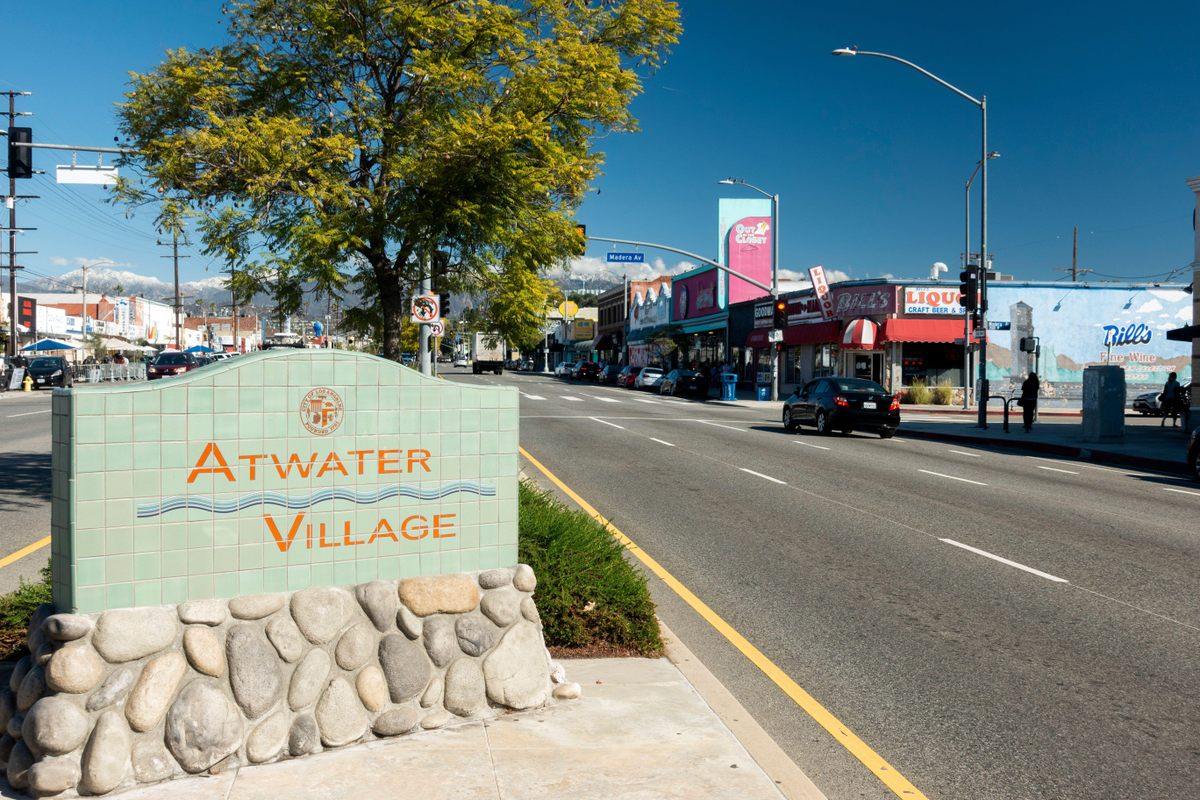
Starting in the 1990s and really ramping up in the past 20 years, the loquat-filled neighborhoods of the East Side—most specifically Silver Lake, Echo Park, Eagle Rock, Mt. Washington, Highland Park, Glassell Park, Atwater Village, Los Feliz, and East Hollywood—started to gentrify, and gentrify hard. Wages have risen slower than home prices, making home ownership (and long-term presence in these neighborhoods) harder. The makeup of the East Side changed dramatically: whiter, more affluent, younger, fewer immigrants. “What that wave did was start displacing certain communities that had cultural and ethnic communities that were multigenerational. Within some of those communities, certain fruits are really coveted, and that’s what you find with loquats on the East Side of Los Angeles,” says Burns.
The new residents didn’t plant the loquats. They mostly didn’t tear them out, either: They’re pretty, and that’s expensive. But the loquats weren’t their choice, and it’s fair to say that many Americans, if they don’t have cultural ties to a place that values the loquat, have no idea what it even is.
This idea, that as gentrification hits these neighborhoods on either side of the Los Angeles River, some culinary institutional knowledge may be lost, is not something that has gotten much attention. On the list of things to worry about with gentrification, uneaten fruit on the trees is pretty far down. But that doesn’t mean it isn’t important. “You can drive through and you’ll see fruit trees everywhere,” says Rodriguez, of City Terrace. “And I think I do associate that with my culture and with the character of my neighborhood, and as it starts to gentrify, I do think that could be affected and changed.”
Rojas, I think, found the idea of gentrified fruit trees simultaneously amusing and compelling. “It’s a really interesting urban design challenge for L.A., because how do you preserve landscapes as a memory of place?” he says. “These trees tell a story of the people who were here before you.”
Anderson noted the frequency, or at least the feel, of transience in the city. “L.A. and New York are both places that people choose to live in when they’re young, and then if they have kids they move out of,” she says. “But the trees are this one continuous, enduring thing that identifies the original folk, the people that built that place. Their mark is left on that space whether or not you know it.”
Loquats actually have a longer history in Los Angeles than even the street trees in the East Side. Ads in the Los Angeles Times starting in the late 1800s hawked groveland that included loquats. A 1906 article exclaimed that six varieties were available in Los Angeles markets, and that demand for the fruit was booming. That was largely due to the efforts of one C.P. Taft, a fruit grower in Orange County, who loved loquats and was at the forefront of trying to make them commercially viable in the United States. He created several new varieties that did very well in Los Angeles’s climate and soil, and for a little while, loquats looked like they might be the new big fruit on the scene. A raw-food-loving free sex cult called Societas Fraterna loved them so much that they bred their own variety, originally named after the founder’s pseudonym. Today, it’s called the Golden Nugget loquat, and is quite common.
This wider appreciation for loquats did not last long. By 1924, the Times called it “a fine fruit that has been rather neglected.” In a 1932 article, they wrote, “loquats are handicapped by lack of consumer demand both locally and in the few eastern markets to which they have been introduced.” By the 1960s, the loquat was referred to as an ornamental tree, nothing more.
The loquat may produce prodigiously, but it is a fruit almost uniquely unsuited for the American fruit market, which values consistency, appearance, utility, and shelf life above all other attributes. This is the country that created, just for example, the worst apple in the world (Red Delicious) and the worst mango in the world (Tommy Atkins) because they looked good, could withstand shipping and storage, and produced a lot. “The choices about what to consume aren’t made by our parents,” says Burns. “The initial choice of what’s permissible to eat is made by corporations, with a barrier provided by the government.”
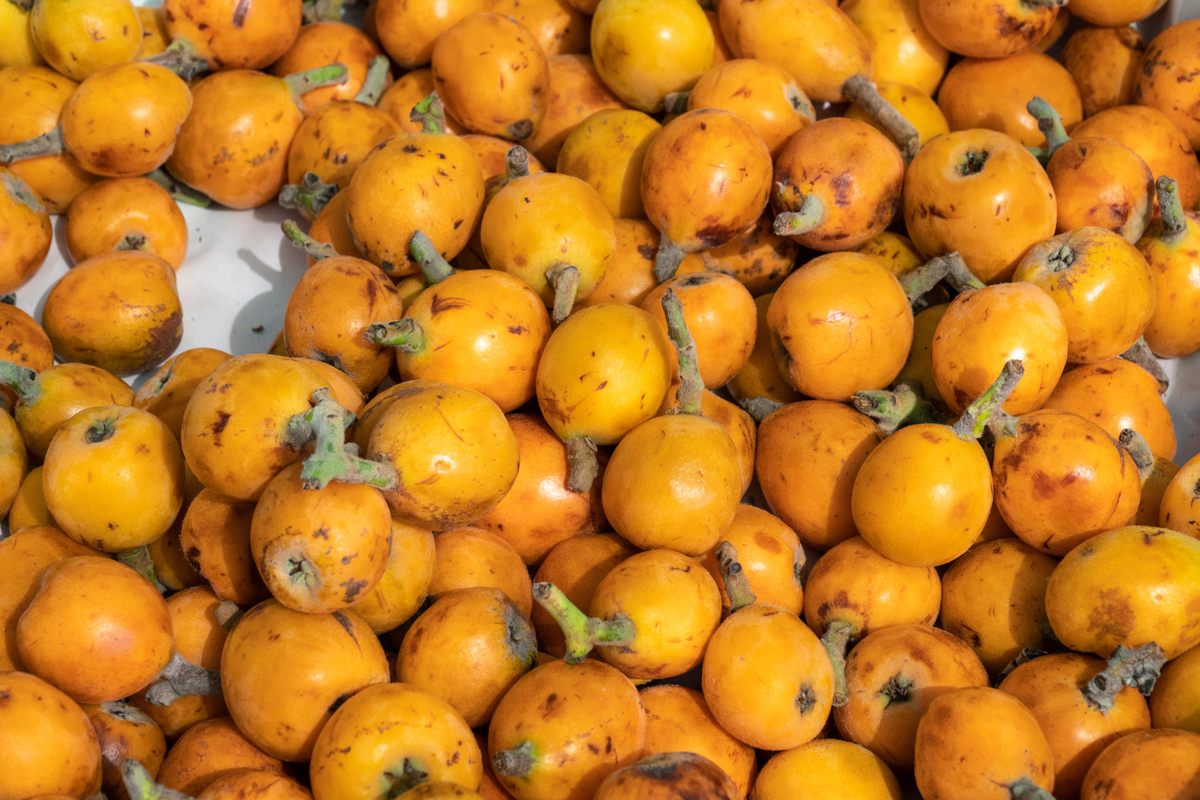
Loquats don’t ripen off the tree at all. If a fruit is underripe when it’s picked, it’ll be underripe forever, so you can’t pick the fruit early and ship it while it’s still firm and resilient. It bruises easily, even while it’s still on the tree. This doesn’t make it any less delicious, but the American fruit industry is convinced that Americans will not buy imperfect-looking fruit. It also oxidizes (like an apple or avocado) very quickly, and does not last very long, even in the fridge. And about 30 percent of its weight is waste, in the form of large seeds, which have cyanide-producing compounds in them. (The Italians, to be fair, do make a liqueur, called nespolino, out of low-cyanide-seed varieties of loquat. Also, to be even more fair, you know what else has a lot of waste from seeds, and the same stuff that can break down to cyanide? Peaches.)
All of these factors don’t make the loquat less palatable—imagine a tropical apricot, a tropicot—or easy to eat. It just makes it a lousy commercial fruit in the United States, which is why it can basically never be found in stores, outside of a couple of farmers’ markets and perhaps a specialty store or two that carries Japanese, southern Chinese, or Latin American produce. There’s only one commercial loquat operation anywhere near Los Angeles, in Malibu, and it seems like the farmer grows them mostly out of stubbornness.
There is also—and this is a more nebulous sort of theory—something culture-specific about fruit and the sharing of fruit. Many immigrant and minority communities seem to simply place more value on fruit than the Western and Northern European descendents that make up much of white America. “There’s always just fruit laying out in every Asian household,” says Tseng. My own household, which was Jewish, always had fruit around, and when I visit home, my dad invariably gives me what feels like a garbage bag’s worth of fruit to take home, as if there was somehow no fruit to be found in whatever city I was living in. In 2019, says Tseng, there was even a rash of food essays online about non-white parents showing love through the act of giving fruit. “Whenever anyone comes to visit, we’ll give them or let them pick a bag of fruit, that is very much a thing,” says Rodriguez.
White families, when hosting, may give out cakes, cookies, that kind of thing. For immigrant groups and minorities, though, it’s often fruit. I do not have data to back this up; frankly, I don’t know that data on this exists. But everyone I talked to agreed that fruit was always around in their homes, and not around in their white friends’ homes, and that kind of lines up with some of the narratives in this article, so I’m going to go with it.
For those Angelenos who do love them, there’s no reason to buy them, anyway. They’re free, for a short window, every spring. All it takes is a walk around the block and an appetite.
Gastro Obscura covers the world’s most wondrous food and drink.
Sign up for our email, delivered twice a week.



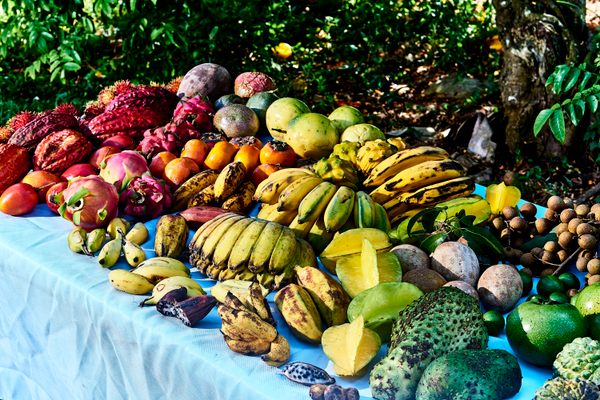

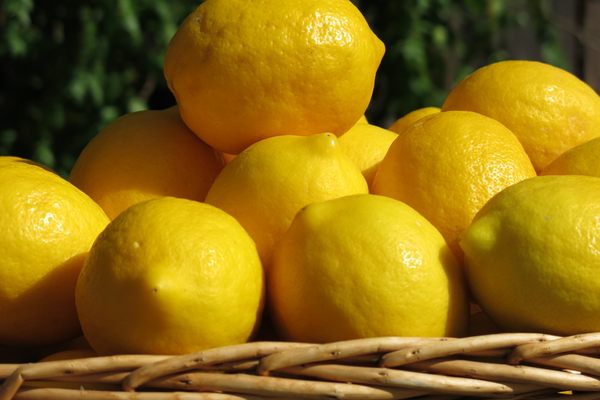
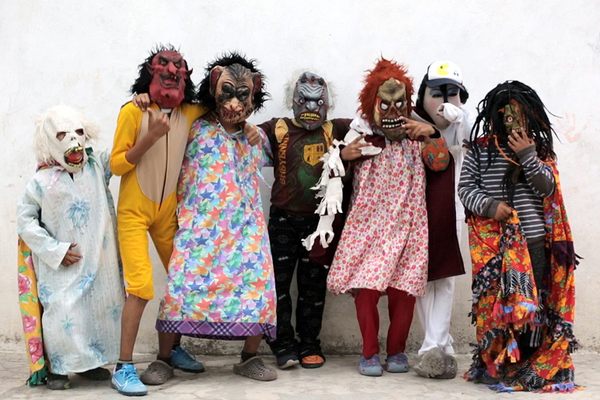










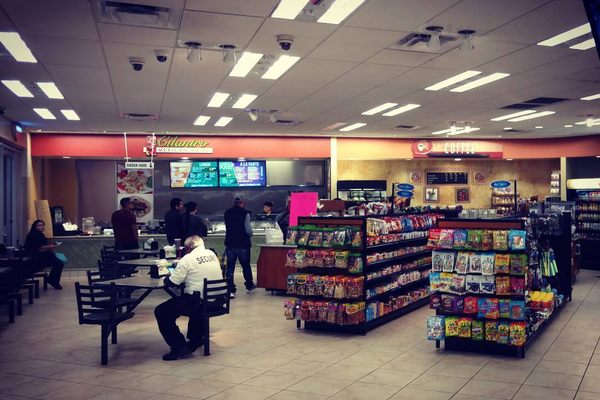
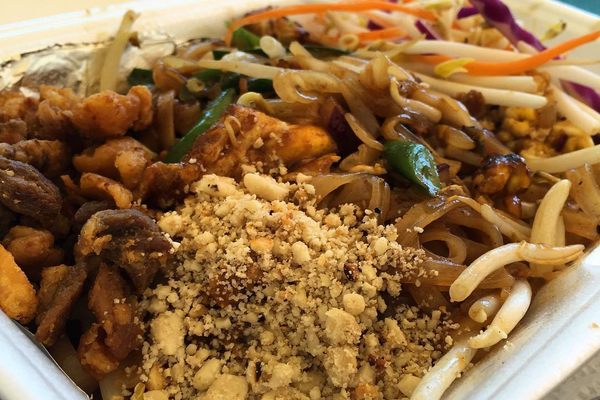
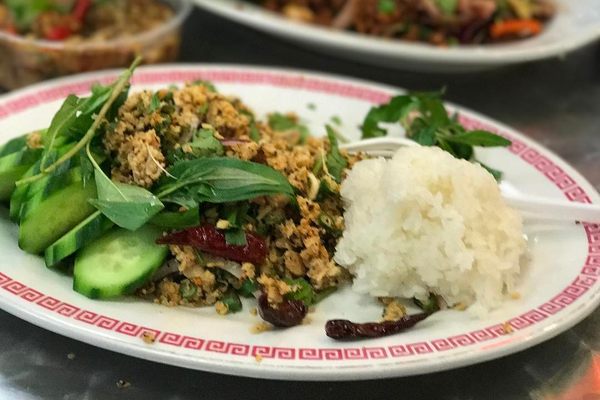




Follow us on Twitter to get the latest on the world's hidden wonders.
Like us on Facebook to get the latest on the world's hidden wonders.
Follow us on Twitter Like us on Facebook